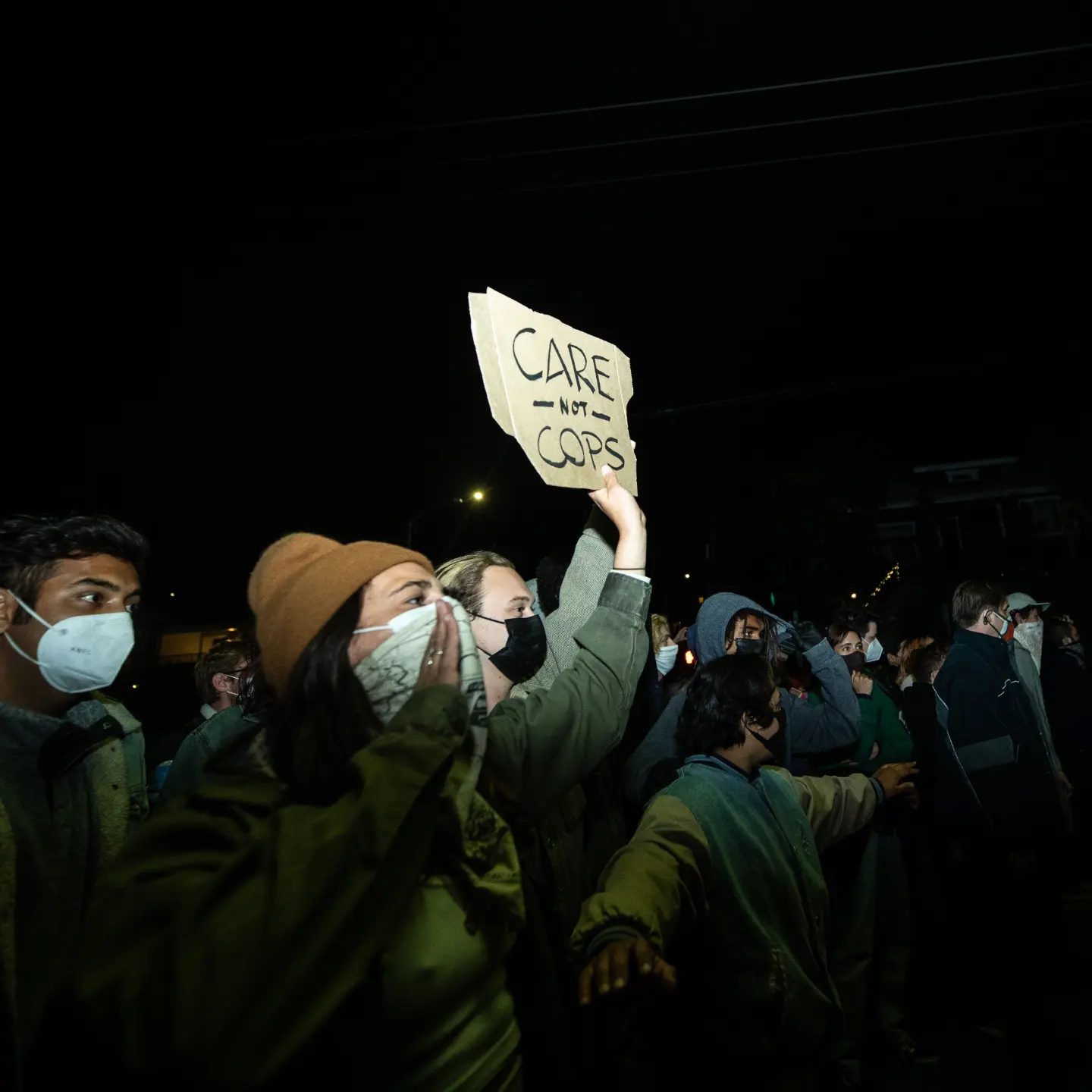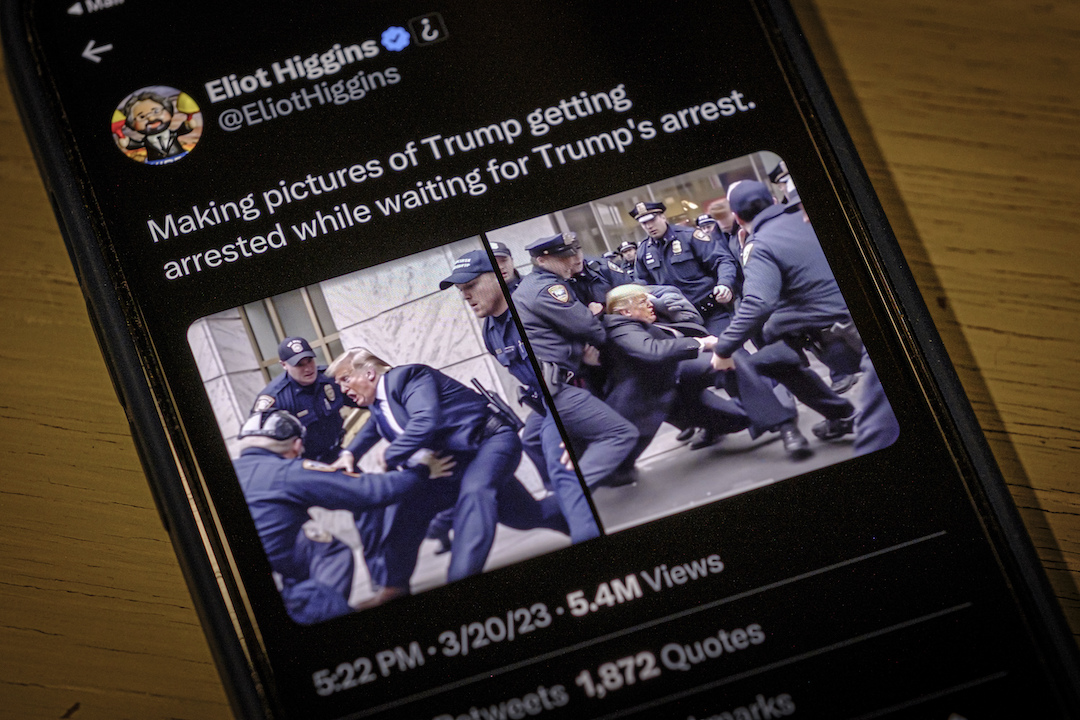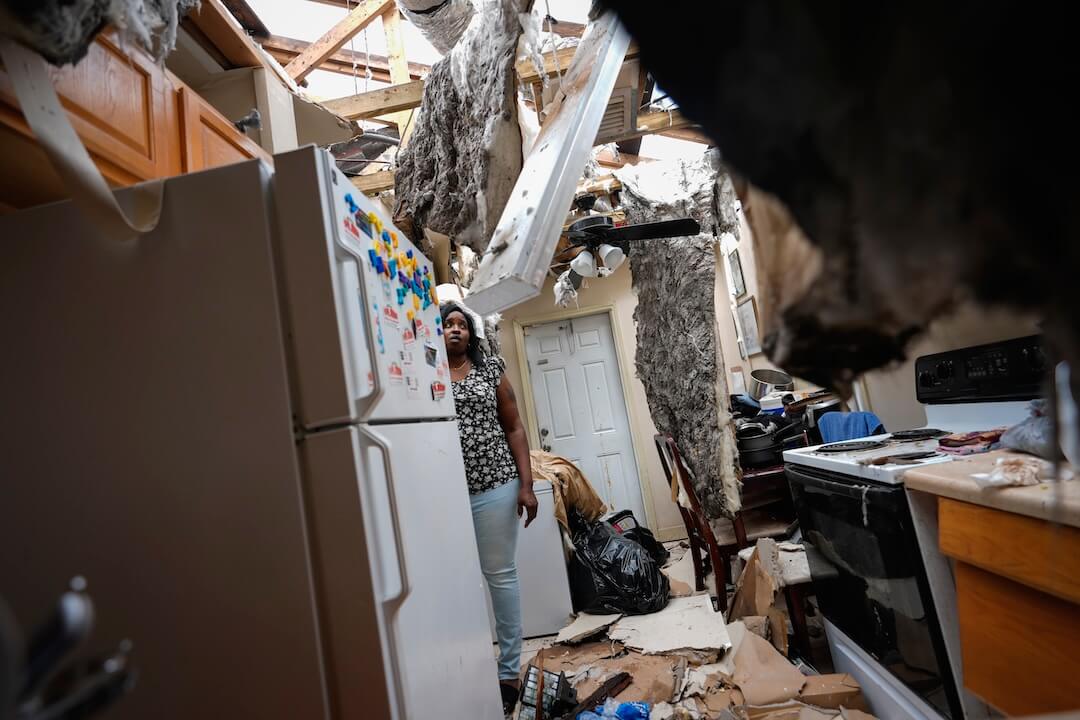The Lead is a weekly newsletter that provides resources and connections for student journalists in both college and high school. Sign up here to have it delivered to your inbox every Wednesday morning during the school year.
By Aarohi Sheth, University of Southern California
The power that photos hold is undeniable. They carry a potential to spark awareness and action-based change, as demonstrated by photos of farmers’ protests in India, Haitian migrants fleeing to Texas, Russia’s war on Ukraine and many more. They capture a viscerality that words can’t.
At Annenberg Media, the University of Southern California’s student-run newsroom, we’ve been publishing more and more photo stories on everything from Holi to protests against sexual assaults in Greek life to recent vigils honoring those who have lost their lives to anti-Asian hate crimes.
I am a photojournalist and have documented Black Lives Matter protests, gentrification’s impact on small businesses and cultural festivals. However, I don’t take photos for Annenberg Media — I serve on the newsroom’s Equity Board, for which I edit visuals, audio/video and written stories as they pertain to issues of diversity, equity and inclusion.
There is a fine line between using photography to tell a poignant and compelling story and exploiting the community you’re covering. And especially as a student photojournalist, it can be hard to decipher if your presence and work are benefitting surrounding communities.
So how do you find the balance between storytelling and not being exploitative in photojournalism?
First, it’s important to get to know a community or area without your camera.
The key to being a good journalist — no matter the medium — is building trust with communities. Parachute journalism, or going in and out of an area to simply extract stories from a particular community, rather than engaging with them, happens all too often. Student journalists have even more potential to slip into parachute journalism, since they can get used to the bubble of their campus and not know the community outside of it.
A good way to build connections with people and gain their trust is to spend time in the areas you want to cover without your camera. Approach them as people that you can build relationships with, rather than potential stories.
“Get to know the people and let them get to know you,” said Miki Turner, a photojournalism professor at USC. “Going to a community without your camera is the best thing you can do. That’s how people will trust you and understand why you’re there.”
Michael Chow, one of Annenberg Media’s photojournalists, agreed.
“Spend some time without your camera and listen,” Chow said. “Listen to people’s stories and understand where they’re coming from, especially if they don’t trust you. Understand their concerns and their needs and wants before you shoot.”
Chow also recounted an experience taking photos for a story in Leimert Park — which is a Black cultural hub in Los Angeles — about small businesses in the area and their petition for increased access to public parking.
Chow listened to community members’ feelings of distrust in Chow and the media in general. They told Chow about their experiences with media exploitation and how previous journalists’ works didn’t benefit their community at all, but rather the media organizations’.
The community members shared that they wanted to build relationships and tell their stories in a genuine way, rather than continue to deal with people coming in and out, taking photos of them.
Chow followed the residents’ advice and spent time with them, learning who they were and connecting with them as people and business owners before taking photos of them.
It’s important to understand the many ways that ethics intertwine with the stories you’re doing. At Annenberg Media, we have our own style guide written by Steven Vargas, a former Annenberg student. It includes a section on journalism’s history of taking photos out of context and using them to misrepresent communities of color.
Language matters as well. For example, Vargas noted the photos of people flocking the streets to celebrate the Los Angeles Lakers’ NBA championship in October 2020 and how they were captioned as a “riot,” misrepresenting the event and portraying the fans as violent.
As a journalist, you have a unique position of power and consistently have to make sure you’re letting community members tell their own story, rather than telling it on their behalf. Think about who will truly benefit from the piece before you start shooting. If you don’t assess community members’ feelings and talk to them about their past experiences with the media, you could be retriggering them with your work.
Daniel Hahm, Annenberg Media’s executive editor, recalled an assignment he did on affordable housing and unhoused communities in Los Angeles. He said his professor asked him to take photos of encampments and that while doing so, he had conflicting feelings about whether he was truly keeping ethics at the center of the piece.
“As I was taking pictures, I realized that I wasn’t speaking to anyone at the encampments,” he said. “(Taking photos) can have you so separated from the story you’re covering, (so) not having any conversations with the people I was covering just felt weird.”
He stressed the importance of talking to the people involved in a story and having real interactions with them before taking photos.
That can also help with writing captions that properly reflect them and contextualize the photo. Incorporating quotes from the people you photographed can further extend the story, too.
Yannick Peterhans, Annenberg Media’s photo desk editor, said he makes sure to interrogate the privilege he has when reporting on a story.
“The best thing I can do is to just be constantly aware of my presence and the fact that I’m not a member of the community (I’m reporting on) and that will impact my subjects, regardless of what I do,” Peterhans said.
What’s our newsroom’s main point of advice? Listen. Engage with the community you’re covering and integrate it in everything you do. Ethics aren’t just a part of visual journalism; they should be at the forefront.
Aarohi Sheth is a senior journalism student at the University of Southern California.
More on visual journalism
This is the last newsletter issue in a series on visual journalism. Read more recent issues:
- Visuals aren’t an afterthought — they’re part of the story
- How to teach video journalism in your student newsroom? Just let your reporters do it.
- Workshops, scholarships and mentorship for your visual journalism
How would you change journalism school?
The last two editions of Alma Matters, Poynter’s newsletter for journalism educators, are full of insights and ideas on how journalism schools could be improved. Read part one and part two and share your own ideas with Barbara Allen, Poynter’s director of college programming, at ballen@poynter.org.
One story worth reading
Newsrooms aren’t participating in the industry’s largest diversity survey. Just 303 organizations responded to the News Leaders Association’s annual survey, Sarah Scire reports for Nieman Lab — a fraction of the 2,500 organizations that NLA sought responses from. The survey, conducted since 1978, is a vital tool for measuring diversity efforts in journalism.
A group of journalism organizations is pushing for a new motivation for newsrooms to participate: asking the Pulitzer Prizes to require participation in NLA’s survey to be considered for the prestigious awards.
“Our country is reckoning with racial inequity and many in the journalism industry can’t or won’t provide essential newsroom transparency on staff diversity,” reads an open letter to the Pulitzer Prizes. “If we can’t collect crucial data, how do we expect to improve newsroom diversity and represent our communities?”
Opportunities and trainings
- Register for training on FOIA and public records from FIRE on May 5.
- High school teachers and advisers, apply for a partnership with the Ida B. Wells Society for Investigative Reporting by May 6.
- College students and recent graduates, apply for the NABJ-Apple News Fellowship by May 13.
- College students, apply for scholarships from the Associated Press Sports Editors by May 15.
- High school students, enter The New York Times’ student podcast contest by May 18.
- Apply to attend the free FIRE Student Network Summer Conference by July 1.
💌 Last week’s newsletter: Workshops, scholarships and mentorship for your visual journalism
📣 I want to hear from you. What would you like to see in the newsletter? Have a cool project to share? Email thelead@poynter.org.






